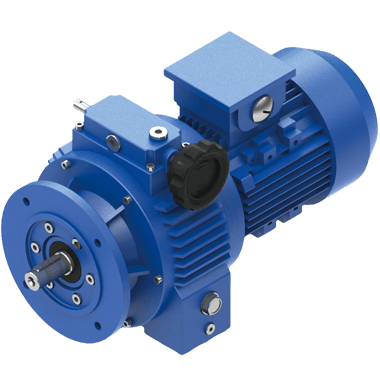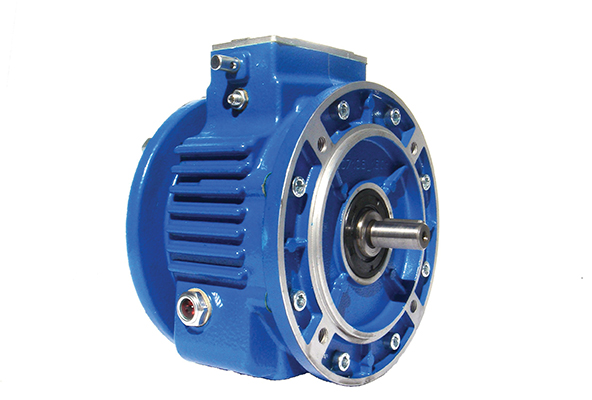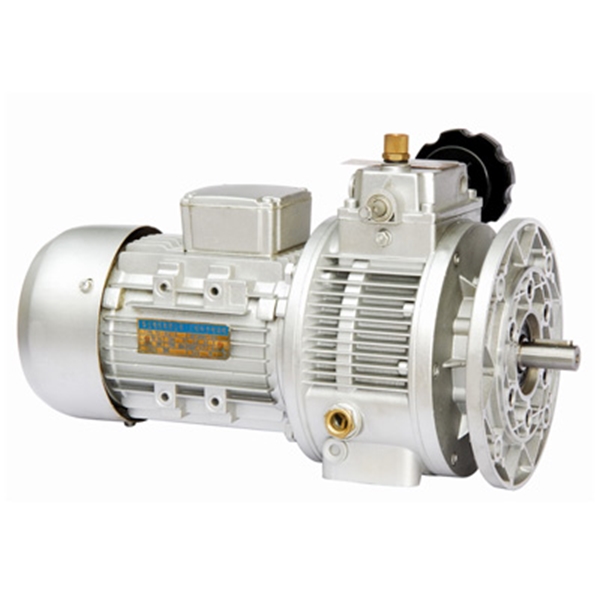Product Description
Product Description
-K Series Helical Bevel Gearbox
K series gear reducer, manufactured according to international technical requirements, has a high scientific and technological content; Space saving, reliable and durable, high overload capacity, power up to 132KW; Low energy consumption, superior performance, reducer efficiency up to 95%
It is designed and manufactured on the basis of module combination system. There are a lot of motor combinations, installation forms and structural schemes. The transmission ratio is classified carefully to meet different operating conditions and realize electromechanical integration.
High transmission efficiency, low energy consumption and superior performance.
Reinforced high rigid cast iron box; The hardened gear is made of high-quality alloy steel. Its surface is carburized, quenched and hardened, and the gear is finely ground. It features stable transmission, low noise, large bearing capacity, low temperature rise, and long service life. Performance and characteristics:
1. The gear is carburized and quenched with high-quality alloy, the hardness of the tooth surface is up to 60 ± 2hrc, and the grinding accuracy of the tooth surface is up to 5-6
2. The computer modification technology is used to pre modify the gear, which greatly improves the bearing capacity of the reducer
3. Complete modular structure design is adopted from the box to the internal gear, which is suitable for large-scale production and flexible selection
4. The standard reducer models are divided according to the form of decreasing torque. Compared with the traditional equal proportion division, they are more in line with customer requirements and avoid power waste
5. It is designed and manufactured by cad/cam to ensure the stability of quality
6. Multiple sealing structures are adopted to prevent oil leakage
7. Multi directional noise reduction measures to ensure the excellent low noise performance of the reducer
8. The installation mode of Liyi products is flexible, which makes it easy for customers to choose K57 reducer, K67 reducer, K77 reducer, K87 reducer, K97 reducer, KA87 reducer, KA97 reducer, KA107 reducer, KA127 reducer
Product Features
1. Input mode: Coupled motor, belted motor, input shaft or connection flange.
2. Output: Right angle
3. Compact structure. Rigid tooth face. Carrying greater torque, high loading capacity.
4.High precision gear, ensuring the unit to operate stably, smooth transmission.
5. Low noise, long lifespan. Large overlap coefficient, abrasion resistant.
Shaft gear box speed reducer high efficiency and stable operation Gear box speed reducer gearbox with small vibration and low noise
Speed ratio is wide and the grading is fine
Gear reducer box Installation method variety
Detailed Photos
Our product line
/* March 10, 2571 17:59:20 */!function(){function s(e,r){var a,o={};try{e&&e.split(",").forEach(function(e,t){e&&(a=e.match(/(.*?):(.*)$/))&&1
| Hardness: | Hardened Tooth Surface |
|---|---|
| Installation: | 90 Degree |
| Layout: | Expansion |
| Gear Shape: | Bevel Gear |
| Step: | Single-Step |
| Type: | Gear Reducer |
| Samples: |
US$ 1000/Piece
1 Piece(Min.Order) | |
|---|
What factors should be considered when selecting a variator for different industrial applications?
When selecting a variator for different industrial applications, several factors need to be considered to ensure optimal performance and compatibility. Here are the key factors that should be taken into account:
1. Load Requirements:
The first factor to consider is the load requirements of the specific industrial application. Determine the torque and power demands of the machinery or equipment that the variator will be driving. It is essential to select a variator that can handle the anticipated load conditions without exceeding its maximum torque or power capabilities. Consider factors such as starting torque, peak torque, and continuous torque requirements to ensure the variator can handle the load effectively.
2. Speed Range:
Consider the required speed range for the application. Determine the minimum and maximum speeds that the variator needs to achieve. Variators are designed to operate within specific speed ranges, so it is crucial to select a model that can accommodate the required speed range while maintaining optimal performance. Additionally, consider the desired speed resolution or increments required for precise speed control.
3. Environmental Conditions:
Take into account the environmental conditions in which the variator will operate. Factors such as temperature, humidity, dust, and vibration levels can impact the performance and longevity of the variator. Choose a variator that is designed to withstand the specific environmental conditions of the industrial application. For example, some variators are specifically designed for harsh or hazardous environments and have enhanced protection against dust, moisture, or extreme temperatures.
4. Control System Integration:
Determine how the variator will integrate with the control system of the industrial application. Consider compatibility with existing control interfaces or protocols, such as analog, digital, or fieldbus systems. Ensure that the variator can be easily integrated into the control architecture of the machinery or equipment, allowing for seamless communication and control. Compatibility with programmable logic controllers (PLCs) or other control devices should also be evaluated.
5. Operational Efficiency:
Evaluate the operational efficiency of the variator. Look for features that contribute to energy efficiency, such as low power losses or regenerative capabilities. A variator that operates efficiently can help reduce energy consumption, lower operating costs, and minimize the environmental impact. Consider features like automatic energy optimization, energy monitoring, or sleep modes that can enhance the overall efficiency of the variator.
6. Maintenance and Serviceability:
Consider the ease of maintenance and serviceability of the variator. Look for features that simplify maintenance tasks, such as accessible components, user-friendly interfaces, and diagnostic capabilities. Additionally, consider the availability of spare parts and the reputation of the manufacturer or supplier in terms of customer support and after-sales service.
7. Cost and Budget:
Finally, evaluate the cost of the variator and its alignment with the budget for the industrial application. Consider the initial purchase cost as well as the long-term operational costs, including energy consumption, maintenance, and potential downtime. It is important to strike a balance between the desired features, performance, and cost-effectiveness to ensure the best value for the specific application.
By considering these factors - load requirements, speed range, environmental conditions, control system integration, operational efficiency, maintenance and serviceability, and cost - when selecting a variator for different industrial applications, you can make an informed decision that meets the specific needs of the machinery or equipment, ensuring reliable and efficient operation.
Can you provide insights into the importance of proper variator alignment?
Proper variator alignment is of utmost importance for the optimal performance and longevity of variator systems. The alignment refers to the precise positioning and alignment of the variator components, including the drive and driven pulleys, belts, and associated hardware. Here are some insights into the importance of proper variator alignment:
1. Efficient Power Transfer:
Proper variator alignment ensures efficient power transfer from the engine to the driven wheels. When the variator components are properly aligned, there is minimal power loss due to misalignment or slippage. This efficient power transfer allows the vehicle to operate at its maximum performance potential, providing better acceleration, smoother shifts, and improved fuel efficiency.
2. Optimal Belt Performance:
Variators rely on belts to transmit power between the drive and driven pulleys. Proper alignment ensures that the belts operate within their designed specifications. Misalignment can cause the belts to run off-center or at an angle, leading to increased wear, premature belt failure, and reduced overall performance. Aligning the variator components correctly ensures that the belts are properly tensioned and positioned, maximizing their lifespan and performance.
3. Reduced Wear and Tear:
Misalignment can result in excessive friction, heat buildup, and increased wear on the variator components. The misaligned pulleys and belts can cause uneven distribution of forces and place additional stress on the bearings, shafts, and other mechanical parts. Over time, this can lead to accelerated wear, premature failure of components, and costly repairs. Proper variator alignment helps minimize these issues, reducing wear and tear and increasing the lifespan of the system.
4. Smooth Operation:
Proper alignment contributes to smooth and seamless operation of the variator system. When the variator components are aligned correctly, the gear ratio changes occur smoothly without jerks or vibrations. This smooth operation improves the overall driving experience, ensuring comfortable shifts and consistent power delivery. Misalignment can result in erratic behavior, such as belt slippage, juddering, or sudden changes in power output, compromising the vehicle's performance and drivability.
5. Prevents Excessive Noise and Vibration:
Misaligned variator components can generate excessive noise and vibration during operation. The misalignment can cause the belts to rub against the pulleys, leading to squealing or chirping noises. In addition, vibrations may occur due to the imbalanced forces generated by misaligned components. Proper variator alignment helps minimize these noise and vibration issues, ensuring a quieter and smoother operation of the system.
6. Avoids Premature Component Failure:
Misalignment places undue stress on the variator components, increasing the risk of premature failure. Bearings, shafts, pulleys, and other mechanical parts can experience excessive wear, fatigue, or damage when subjected to misalignment-related forces. By aligning the variator components correctly, the load is distributed evenly, reducing the risk of premature failure and extending the lifespan of the system.
7. Consistent Performance and Efficiency:
Proper variator alignment ensures consistent performance and efficiency throughout the lifespan of the system. When the components are aligned correctly, the variator operates as intended, delivering consistent gear shifts, power delivery, and fuel efficiency. Consistency in performance and efficiency is vital for a reliable and enjoyable driving experience.
In conclusion, proper variator alignment is essential for the optimal performance, longevity, and reliability of variator systems. It ensures efficient power transfer, optimal belt performance, reduced wear and tear, smooth operation, minimized noise and vibration, avoidance of premature component failure, and consistent performance and efficiency. Regular inspection and maintenance, along with professional alignment when necessary, are crucial to maintaining proper variator alignment and maximizing the benefits of the system.
In what types of vehicles or machinery is a variator commonly used?
A variator is commonly used in various types of vehicles and machinery where the ability to provide variable speed or torque output is desirable. It offers advantages such as continuous gear ratio variation, stepless gear shifts, and optimized engine RPM. Here's a detailed explanation of the types of vehicles and machinery where a variator is commonly used:
1. Automobiles:
One of the most common applications of a variator is in automobile transmissions. Continuously variable transmissions (CVTs) equipped with variators are increasingly being used in passenger cars, SUVs, and other vehicles. CVTs with variators provide smooth and seamless acceleration, improved fuel efficiency, and optimized power delivery. They are particularly beneficial in stop-and-go traffic situations and urban driving conditions.
2. Motorcycles and Scooters:
A variator is also commonly used in the transmissions of motorcycles and scooters. CVT systems with variators provide a smooth and responsive riding experience, allowing riders to easily adjust the speed and torque output. They offer advantages such as reduced gear shifting, improved acceleration, and enhanced fuel efficiency.
3. Industrial Machinery:
In industrial machinery applications, variators are used in systems that require adjustable speed or torque output. For example, variators can be found in conveyor systems, pumps, fans, and other equipment where precise control and flexibility are necessary. The ability to continuously vary the speed or torque allows for efficient operation and adaptability to different workloads.
4. Agricultural Equipment:
Agricultural machinery, such as tractors, combines, and harvesters, often use variators in their transmissions. The variators enable these machines to adjust their speed and torque output based on the specific requirements of different agricultural tasks. This flexibility allows for efficient operation in various field conditions and crop types.
5. Construction and Earthmoving Equipment:
In the construction and earthmoving industry, variators are used in machinery such as excavators, loaders, and bulldozers. These machines often require variable speed and torque to handle different tasks, such as digging, lifting, or pushing. Variators enable the equipment to adjust its output to match the specific requirements of each operation, improving productivity and control.
6. Marine Applications:
Variators are also utilized in marine applications, including boats, yachts, and ships. CVTs with variators provide smooth and efficient power delivery, allowing for precise control of the vessel's speed. They offer benefits such as reduced vibration, improved fuel efficiency, and enhanced maneuverability.
In summary, variators are commonly used in automobiles, motorcycles, industrial machinery, agricultural equipment, construction and earthmoving machinery, and marine applications. They provide the ability to adjust speed or torque output continuously, resulting in improved performance, efficiency, and control in a wide range of vehicles and machinery.
editor by CX 2024-01-17





